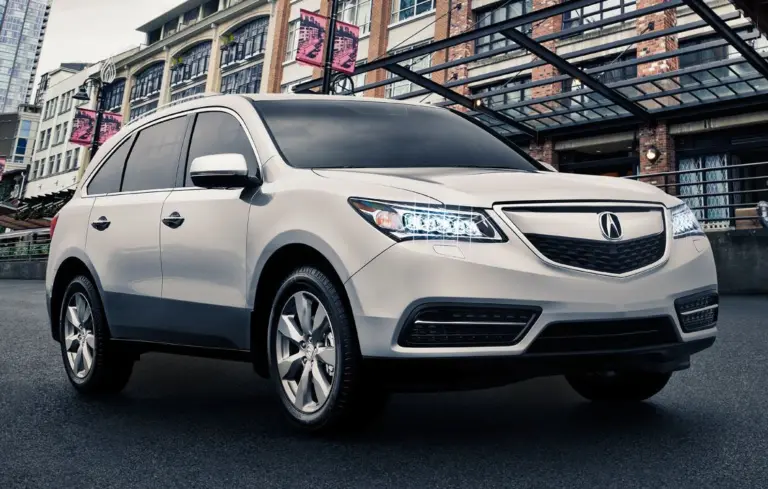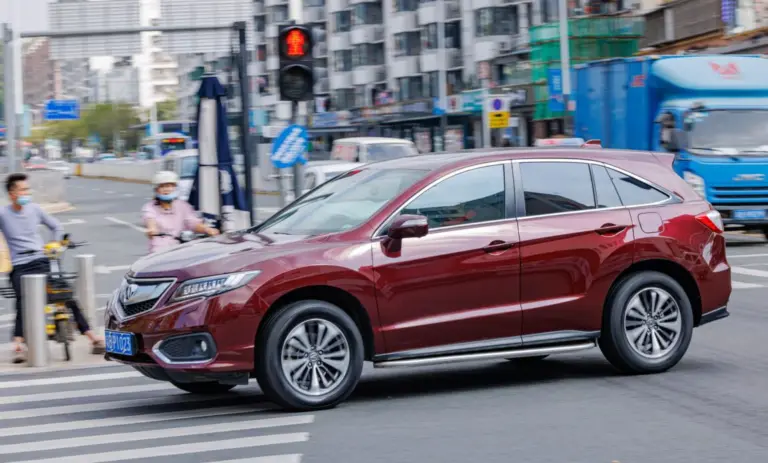Nissan Murano Years to Avoid (Updated)
The Nissan Murano is a standout midsize SUV known for its sleek design and comfortable driving experience. Since its debut in 2003, it has gained a loyal following due to its innovative features and spacious interiors. However, there are some Nissan Murano Years to Avoid.
Not all Murano models have proven reliable. Some years are linked with recurring mechanical and performance issues that can burden your wallet and cause frustration. Identifying these problematic models is crucial when considering a used Nissan Murano.
Nissan Murano Years to Avoid
Certain Nissan Murano model years have become infamous for frequent mechanical issues and poor reliability. If you’re considering a used Murano, knowing which years to avoid can help you sidestep expensive repairs and frustrations. Here’s a closer look at the problematic years:
| Model Year | Key Issues |
|---|---|
| 2003-2007 | CVT transmission failures, engine mount wear, interior accessory malfunctions (e.g., seat adjusters, sun visors) |
| 2009 | Brake system problems (soft pedal, ABS actuator failures), transmission issues |
| 2015 | CVT issues (poor acceleration, jerky movements), electrical system glitches |
2003-2007 Models
The first-generation Nissan Murano, launched in 2003, garnered attention for its futuristic design. Unfortunately, these early models faced significant mechanical setbacks. Transmission failures were a common complaint during these years, primarily related to the Continuously Variable Transmission (CVT). This led to abrupt vehicle shutdowns, difficulty shifting gears, and costly replacements.
Another issue in this range was premature engine mount wear. Faulty mounts caused excessive vibrations, leading to uncomfortable rides and further mechanical strain. Additionally, interior accessory malfunctions plagued these models. Broken seat adjusters and poorly functioning sun visors were frequently reported, detracting from the overall driving experience.
2009 Model
The 2009 Murano, part of the second generation, also encountered its fair share of challenges. A weak brake system was a standout issue, with drivers reporting soft brake pedals and occasional failure of the ABS actuator. Transmission problems re-emerged during this year, echoing concerns from the first-generation models.
2015 Model
Despite being a newer model, the 2015 Murano was not free from criticism. The CVT issues resurfaced, leading to poor acceleration, jerky movements, and heightened repair costs. Drivers noted that the vehicle often failed to deliver a smooth ride, which was particularly disappointing for an SUV marketed as a luxury-inspired vehicle.
Common Issues in These Model Years
Understanding the recurring issues in problematic Nissan Murano models is key to making a smart buying decision. These problems not only impact performance but can also lead to hefty repair bills. Let’s examine the most frequent issues reported by owners.
Transmission Failures
Transmission troubles, particularly with the CVT, have been a recurring issue in several Murano models. Owners of 2003-2007, 2009, and 2015 models reported transmission failure as one of the most severe problems. Symptoms included erratic shifting, delayed acceleration, and complete transmission breakdowns. Repairs were not only expensive but often required full replacements, costing thousands of dollars.
Brake System Problems
The 2009 model saw numerous complaints about its braking system. Drivers reported soft brake pedals, reduced stopping power, and issues with the ABS actuator. These problems posed serious safety risks, especially during sudden stops. For many, resolving these issues required replacing major components, which was neither quick nor cheap.
Engine Mount Failures
Premature engine mount failure was another consistent problem, particularly in early models like 2003-2007. Faulty mounts caused excessive engine vibrations that affected ride quality. Over time, these vibrations could lead to additional wear and tear on surrounding components, increasing repair costs.
Interior Accessory Malfunctions
While not as severe as transmission or brake issues, interior accessory malfunctions still annoyed Murano owners. Early models were particularly prone to problems with seat adjusters, sun visors, and dashboard materials. These flaws diminished the vehicle’s appeal, especially for those expecting a premium experience.
Recommended Nissan Murano Models
If you’re looking for a reliable and trouble-free Nissan Murano, certain model years stand out as excellent choices. These models have garnered praise for their dependability, smooth performance, and overall value. Here’s a breakdown of the most recommended Nissan Murano years:
2011-2014 Models
The 2011-2014 Murano models have earned a reputation for being among the most dependable in the lineup. These years marked a period of improvements in design, performance, and reliability. Key features of these models include:
- Improved Transmission: The CVT issues seen in earlier years were largely addressed, resulting in smoother operation and fewer failures.
- Enhanced Safety Features: These models introduced advanced safety technologies such as stability control, anti-lock brakes, and more airbags.
- Comfortable Ride: High-quality interior materials, spacious seating, and a quiet cabin make these models a joy to drive.
2017 and Later Models
The third-generation Murano, introduced in 2015, showed significant improvements by 2017. Models from this year onward are considered highly reliable and offer cutting-edge features. Notable highlights include:
- Advanced Technology: Standard features include a larger touchscreen display, smartphone integration, and driver-assistance systems like blind-spot monitoring.
- Modern Design: The sleek, aerodynamic exterior and premium interior materials elevate the driving experience.
- Fuel Efficiency: Improved fuel economy makes these models an economical choice for daily use.
If you’re in the market for a used Nissan Murano, focusing on these recommended years will help you enjoy a reliable SUV with minimal concerns. Make sure to prioritize regular maintenance and choose a well-maintained vehicle to maximize your ownership experience.
Frequently Asked Questions (F.A.Q)
Which Nissan Murano years are considered the most reliable?
The most reliable Murano models are typically from 2011-2014 and 2017 onward. These years have fewer reported issues and higher customer satisfaction ratings. Nissan addressed many earlier transmission and braking system problems during these years, making them a safer choice for buyers seeking peace of mind.
Are transmission issues common in all Nissan Murano models?
Not all models suffer from transmission problems, but CVT failures are a recurring theme in the 2003-2007, 2009, and 2015 models. These issues stem from overheating, poor design, or neglecting regular maintenance. Models from 2011 and beyond have more durable transmissions with fewer complaints.
How can I ensure a used Murano is free from these issues?
Before purchasing, request a complete vehicle history report to identify prior accidents, repairs, or recalls. A pre-purchase inspection by a trusted mechanic is also highly recommended. Ensure all maintenance records are available, particularly for the CVT, as regular servicing can extend its lifespan.
Are these problems expensive to fix?
Yes, many of these problems come with high repair costs. Transmission replacements can cost $4,000 to $7,000, while brake system repairs or ABS actuator replacements can range from $1,500 to $3,000. Addressing engine mount failures typically costs $500 to $1,000, depending on labor rates and part availability.
Can recalls fix these issues?
Some issues may be resolved through recalls or extended warranties. Check with a local Nissan dealership to verify whether any recalls are open for the vehicle you’re considering. Free recall services can significantly reduce repair expenses.
Wrapping Up
The Nissan Murano remains a popular choice in the midsize SUV segment, known for its style and comfort. However, certain model years have been plagued by persistent reliability issues. From transmission failures to brake system malfunctions and interior accessory flaws, these problems have earned specific years a reputation to avoid. The 2003-2007, 2009, and 2015 models stand out as some of the least reliable, with recurring complaints that can lead to costly repairs.
| Read Also |
| Toyota Tacoma Years to Avoid |







